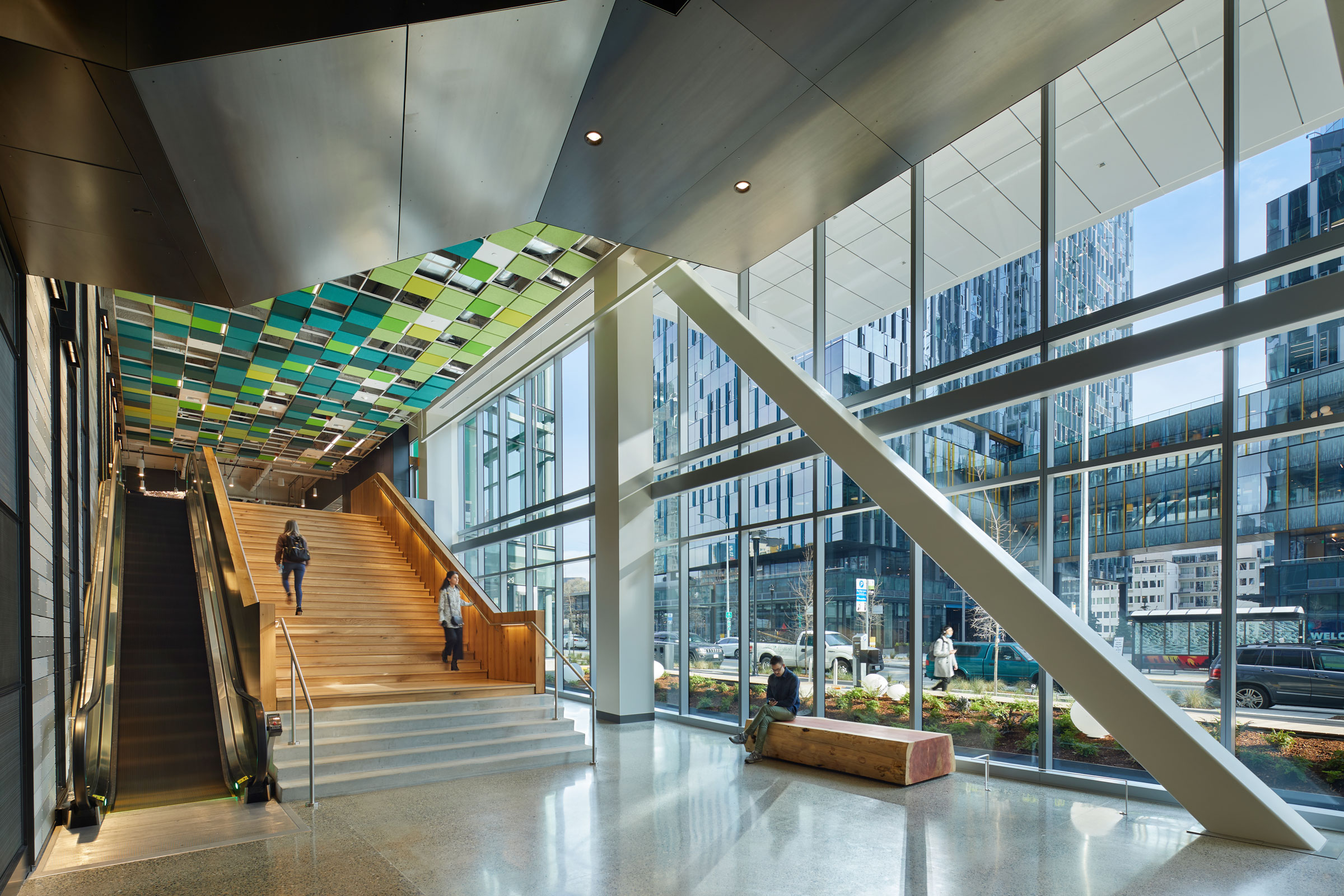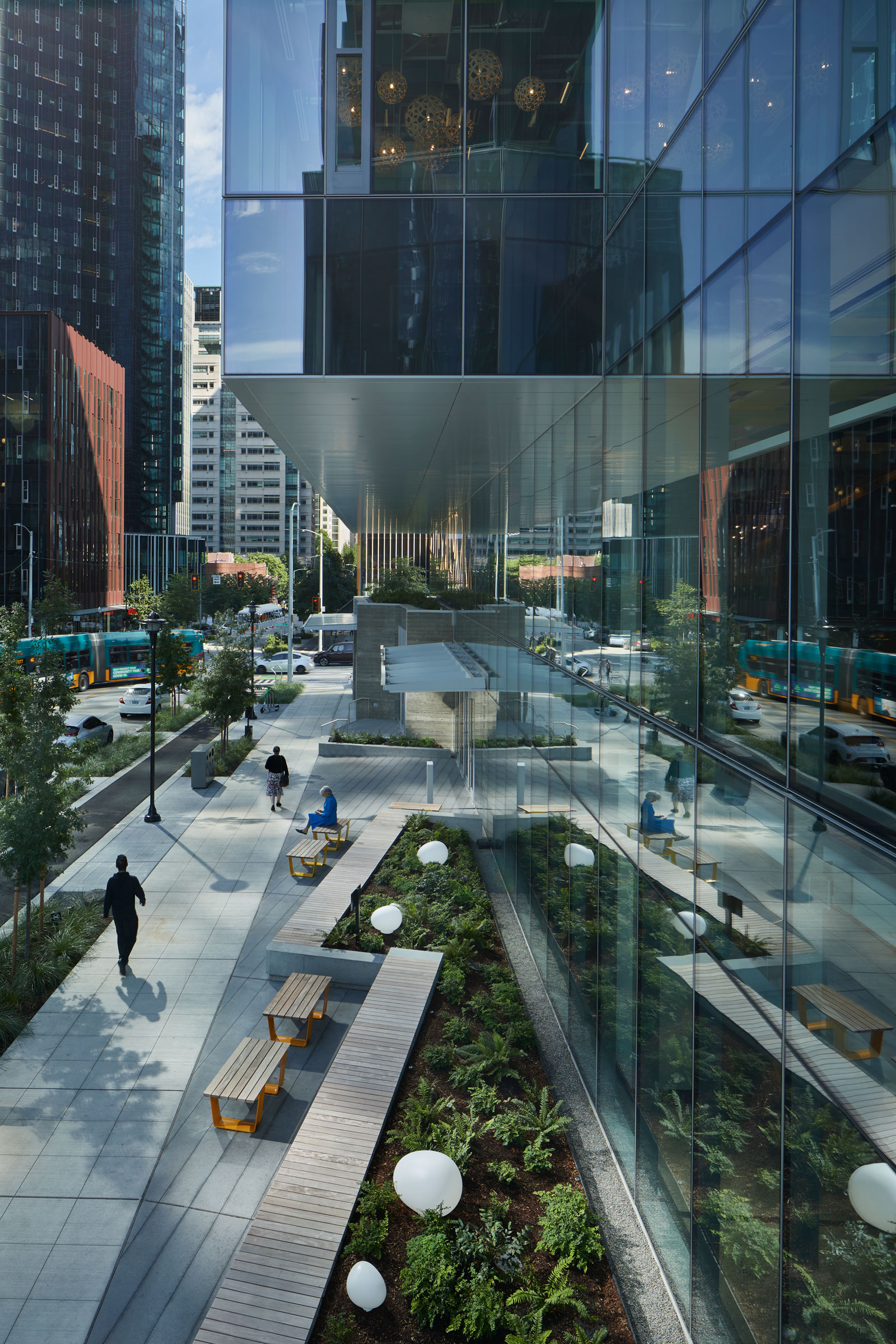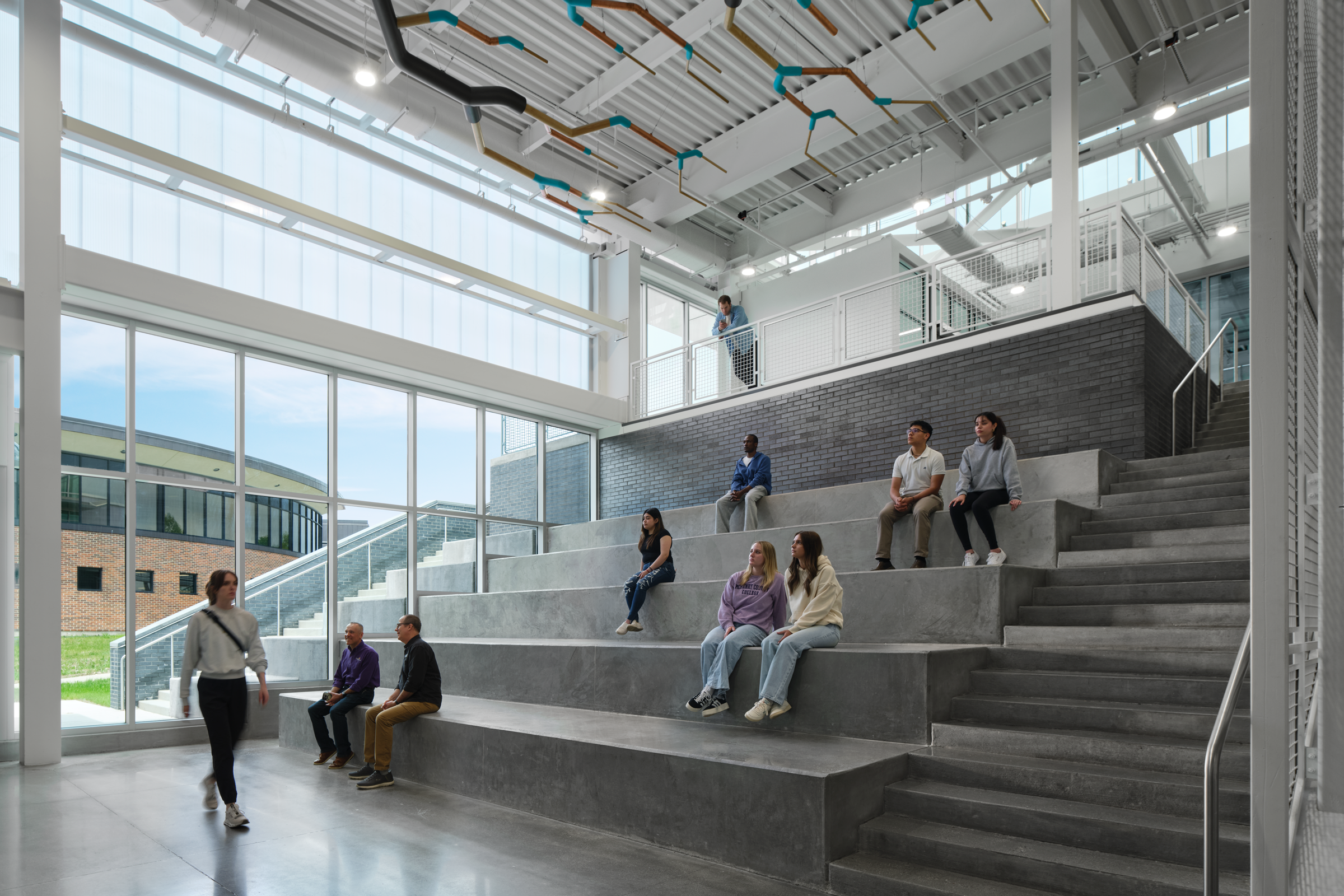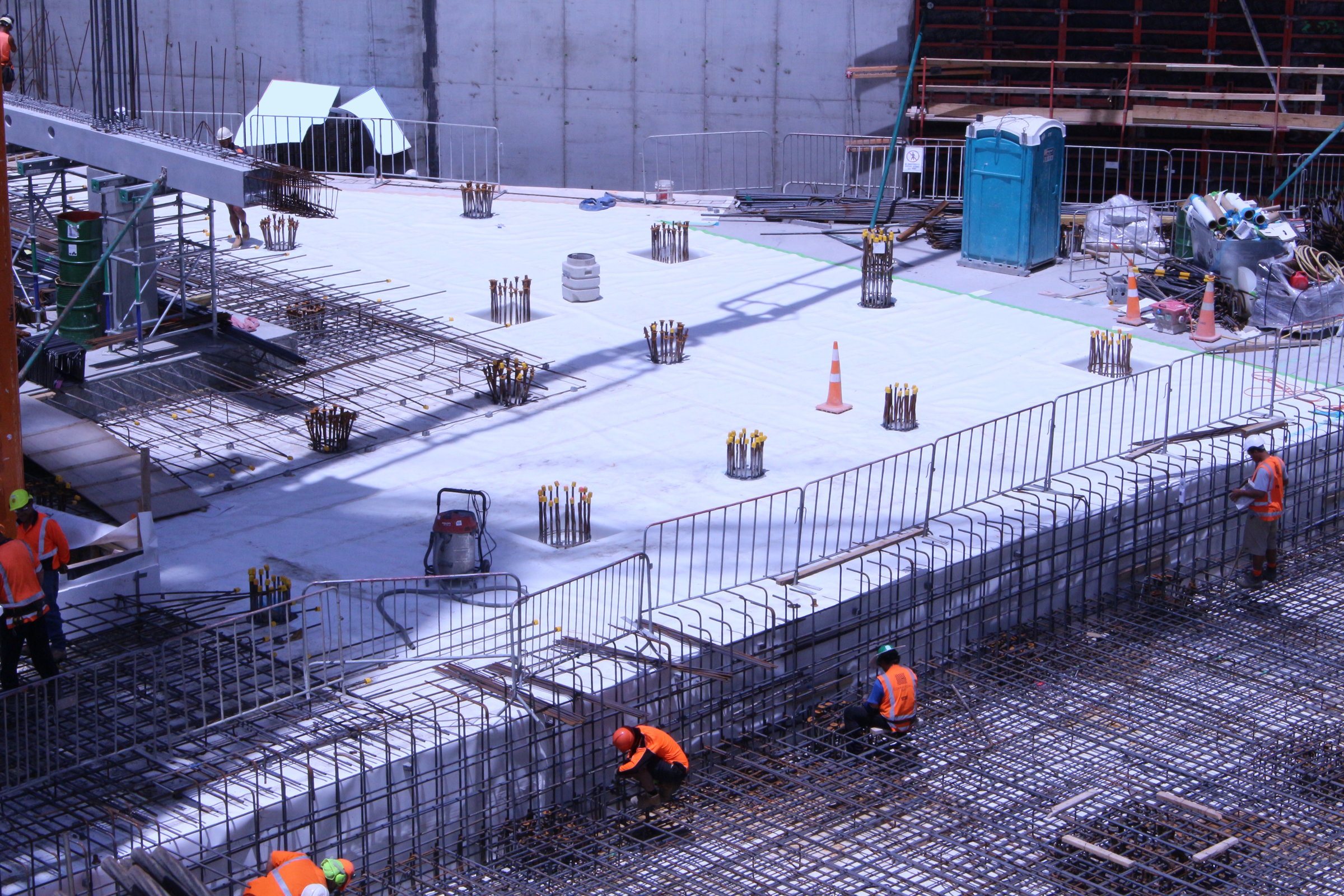Story at a glance:
- Built on half a city block, Amazon’s new Frontier building highlights density and connection within its Seattle campus.
- Architects went all out on a staircase that connects all floors of the building and is visible from the exterior.
- The LEED Gold–certified space features indoor parks with flora native to the Pacific Northwest to bring the outside in.
Seattle is often touted as a city of neighborhoods. Each urban oasis has a character of its own, surrounding a small commercial core. From Capitol Hill to Queen Anne to Columbia City, these eclectic dens make up greater Seattle. Their personalities have been established for decades, though the growth of the city has heralded change within all of them. But in Seattle’s commercial downtown, Graphite Design Group has been quietly building a new neighborhood focused on tech, connection, and density, all for Amazon.
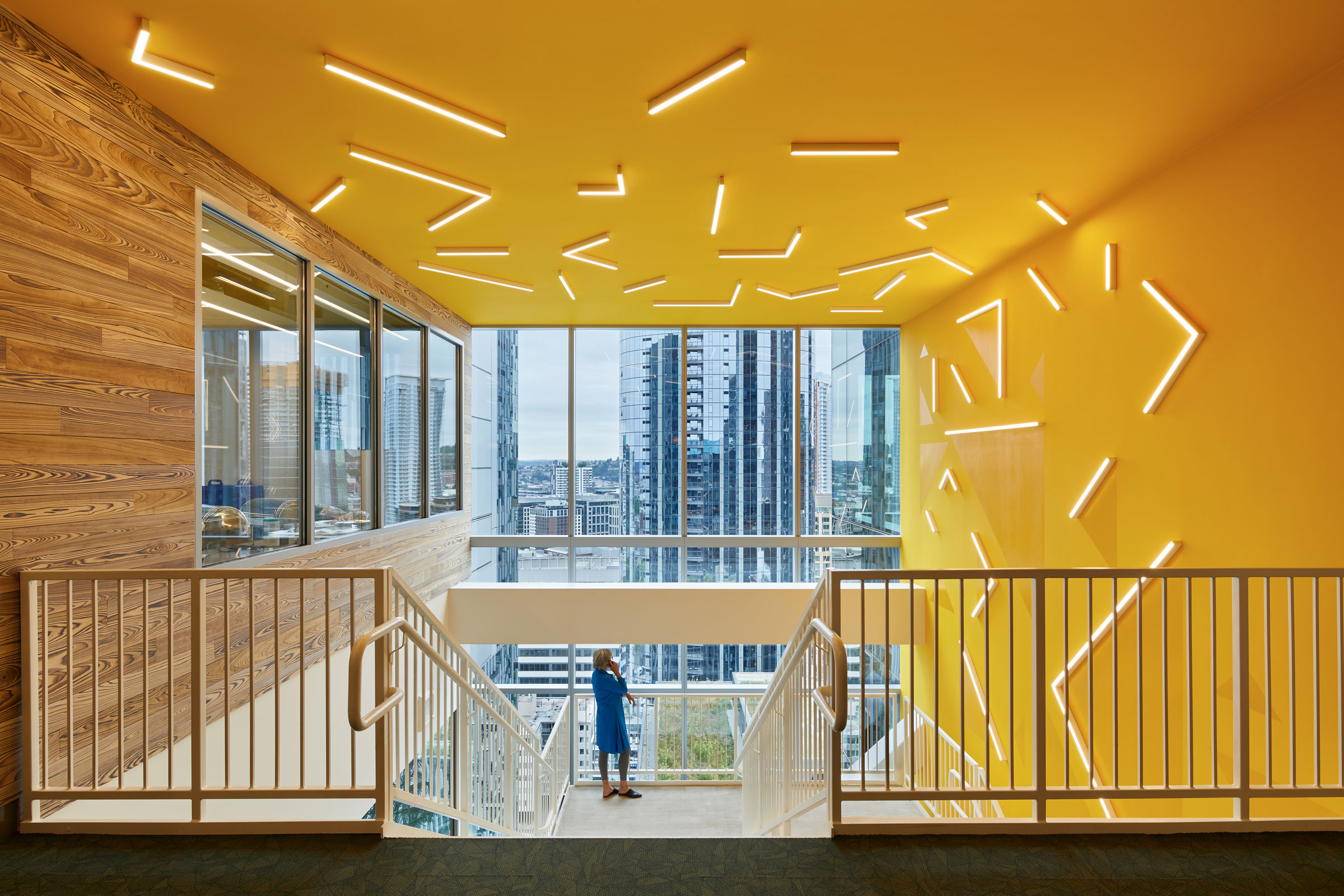
Bright colors and visual elements bring life to Amazon Frontier. Photo by Benjamin Benschneider
The Frontier Building, Graphite’s latest LEED Gold addition to Seattle’s Denny Triangle neighborhood and Amazon’s Regrade Campus, fully opened its doors to Amazon employees in summer 2023. The campus sits in a five-and-a-half city block mixed-use district that Graphite helped to master plan and where they also developed six other buildings.
“Halfway through the design of Nitro, another building on the campus, Amazon approached us about property across the street, which became Frontier,” says Graphite Founding Principal Peter Krech. “They told us ‘We learned a lot from Graphite. Help us find what makes this block unique and special. How does it contribute to what we’ve created already in the surrounding neighborhood?’ What a dream challenge for the client to give to you.”
At the request of Amazon, Krech and his team put extensive effort into building community both around the building and within it. “It’s hard to build connections,” he says. “This is often why technology and other connective employers look to create horizontal buildings.”
Though the Frontier site constituted only half a city block, Krech’s team worked with Amazon to break down vertical barriers; moving people between floors was their biggest challenge. “It’s not intended to be a cube farm,” Krech says. “It’s meant to inspire the exploration Amazon wants from their workforce. They pride themselves on a creative environment and creative problem-solving, so our challenge was figuring out how their spaces can support that culture.”
An Urban Treehouse
- Fifteen years ago the Seattle area known as the Denny Regrade featured parking lots, two unoccupied hotels, and a smattering of underutilized spaces. Photo by Benjamin Benschneider
- Amazon partnered with Graphite Design Group and others to transform the neighborhood around Amazon Frontier into a 24/7 community that would attract places to live, shop, eat, recreate, and find childcare. Photo by Benjamin Benschneider
Architects went all out on a single gesture—a staircase that connects all floors of the building and dubbed the Treehouse Stair. It’s now the building’s signature mark and sits just inside the facade of the building overlooking an open park and the surrounding community.
Tree houses and tree forts are spaces invented by children who take the notion of a home, room, or space and reinterpret them to suit their own imagination. They’re a collection of spaces, made of found objects and ad hoc materials, usually perched high in a tree. Creativity is the name of the game. “We quickly thought that this is a nice metaphor. How would we scale this up and manifest in a building that’s 300 feet tall?” Krech says.
In the case of the Frontier building, the centralized stair becomes the ladder to climb through and around the structure of the building. Throughout the building the steel structure is visible, allowing occupants to tune in naturally to how the space works. “Treehouses are in natural environments, and in the Pacific Northwest connection to the natural environment is part of who we are. Weaving those material choices into the building is part of the treehouse theme.”
Some conference rooms feel like sitting around a campfire; some mimic sitting under a tent; others mimic a walk in the woods thanks to lighting and ceiling treatment. Graphite worked closely with Amazon’s horticulture team to create living forest spaces throughout the building. Contractors and furniture suppliers sourced deadfall old growth trees to create benches resembling fallen logs. Meanwhile, misters come on sporadically, creating a small-scale replication of the famed Amazon Spheres—Jeff Bezos’ interpretation of a greenhouse—inside.
Seven outdoor terrace spaces, including a large one with a dog park on the 17th floor that offers unsurpassed views of the Olympic Mountains, are outfitted with hospitality furniture and soft seating to provide supplemental meeting and collaborative spaces. All of this is connected by Frontier’s central staircase, an atypical arrangement spatially and one that required close coordination with city and fire officials to meet safety requirements and ensure a responsible design. “Those very subtle things combined create a very unique environment,” Krech says. “People tell us it’s one of the more desirable office spaces to return to as Amazon returns to the office.”
Sustainable Successes
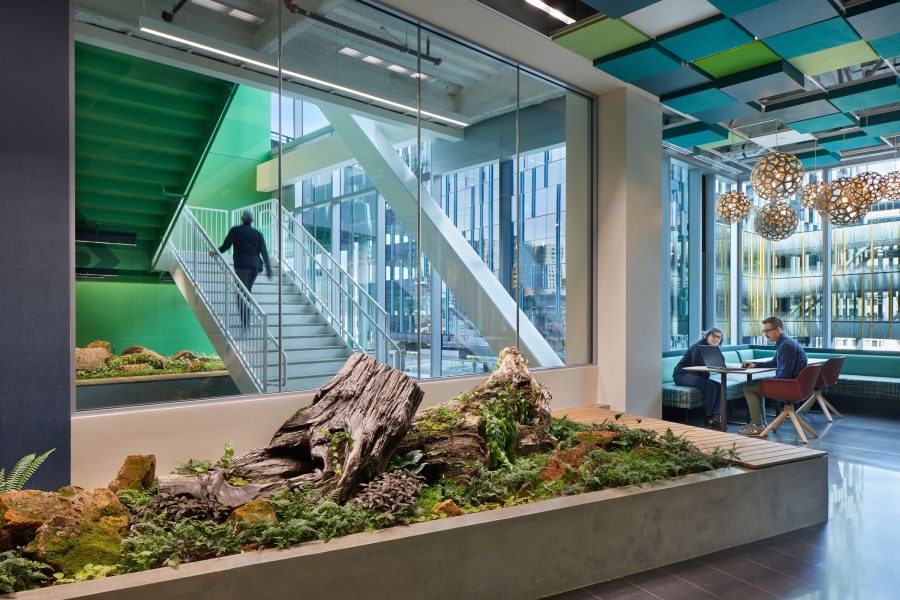
A central challenge for Graphite Design Group was identifying Amazon’s key ideas and ethos and finding ways to implement those ideas in the building: What does problem-solving and creativity mean to people, and how do you prompt people to be in that mental space? Photo by Benjamin Benschneider
A building’s sustainability wins are largely conceived in the pre-planning stages, says Graphite’s Director of Sustainability Ryan DiRaimo. “Immediately choosing to be a mixed-use building or to be situated in a mixed-use neighborhood is the biggest sustainability choice you can make. If a green building needs a car to get to it, you’ve already lost all of your building’s gains with ancillary car emissions.”
Beyond the restaurants and the clothing stores, the surrounding Amazon Campus boasts retail, childcare, small grocers, art, and entertainment. “Our buildings have been inhabited by a wide range of retail uses. All the neighborhood is thriving, invested in the success of mixed use—economic success, environmental success, and social success.”
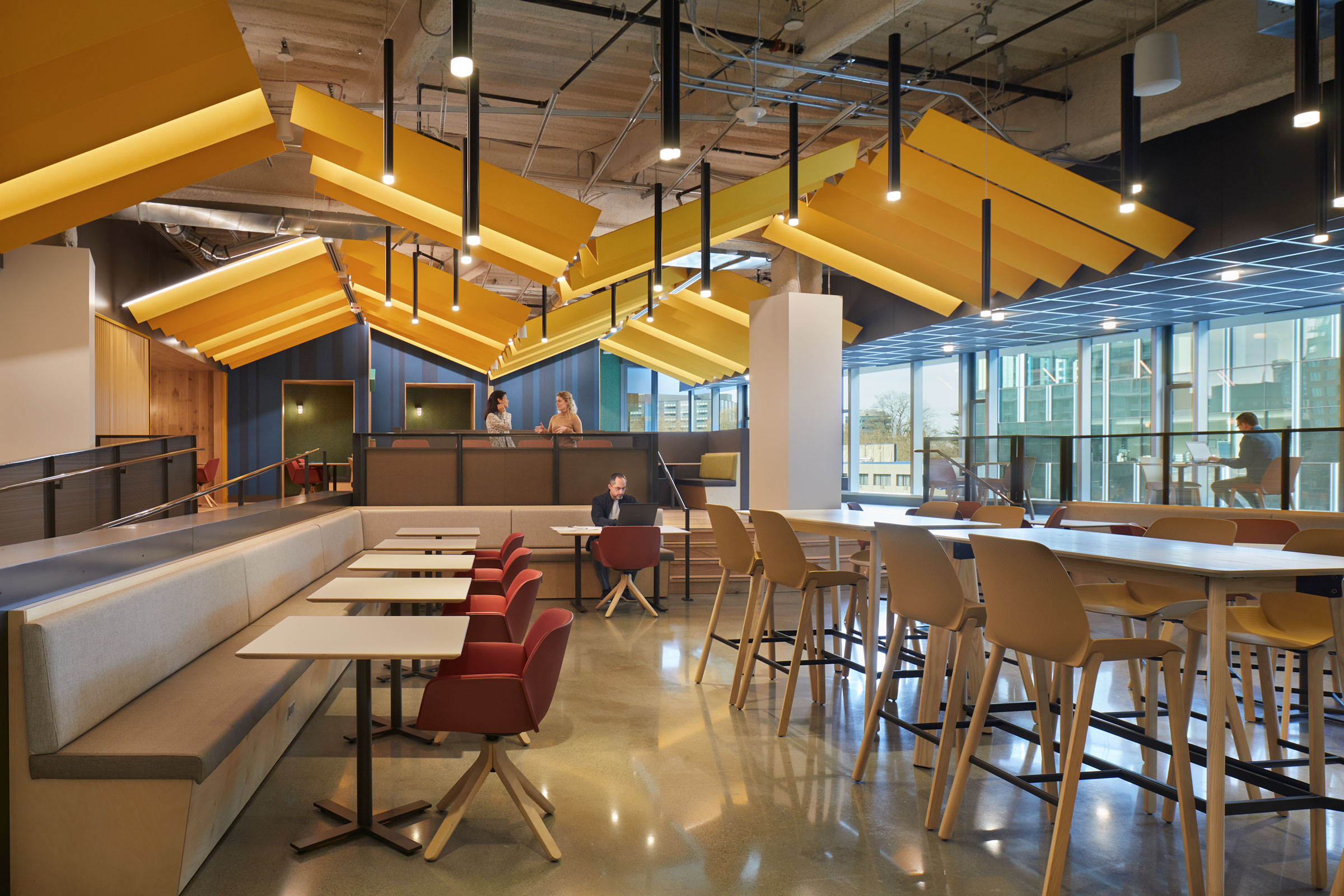
Flexible workspaces abound inside Amazon Frontier. Photo by Benjamin Benschneider
Frontier sits in both a mixed-use neighborhood as well as a walkable, bikeable neighborhood allowing occupants and neighbors to get their needs met within a short distance. The building is also LEED Gold, featuring highlights like concrete walls with recycled content, FSC-certified wood throughout, a high-performance envelope, and the ability to tap into a hot water loop that circulates excess heat from a nearby data center to offset on-site heating needs.
Structural elements are used as final finish elements, meaning fewer materials and a smaller life cycle energy cost for the building. Commuters benefit from nearby transit options, bike lanes, and commuter shower facilities, which may also come in handy for the building occupants taking advantage of the central staircase to get their steps in.
“We’re always proud when our projects meet our clients goals, and we feel we did that here. We created something that was unique from other campus buildings but feels connected to the others,” Krech says. “It’s a real positive contribution to the community.”

